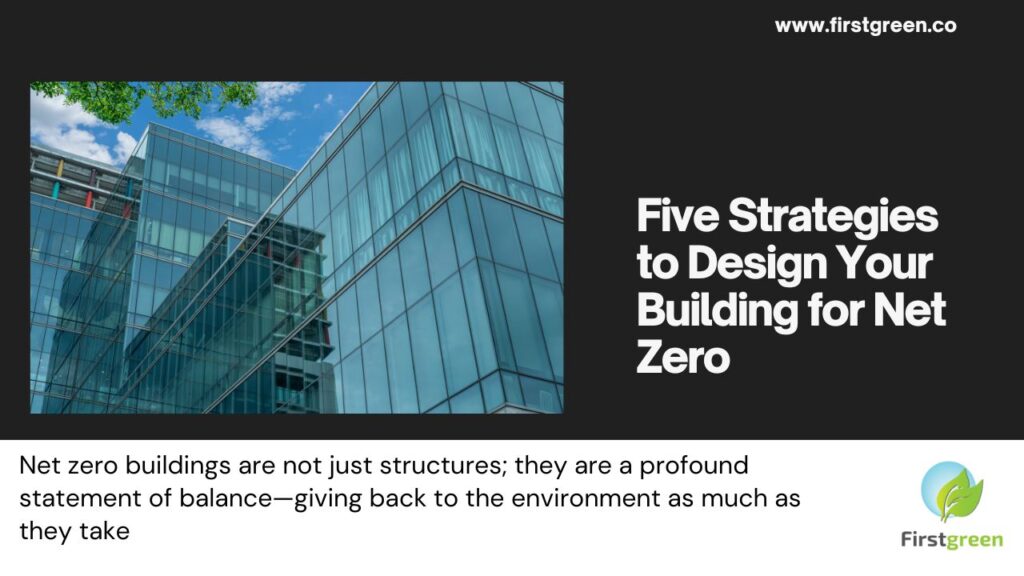
As the urgency to combat climate change intensifies, the concept of net zero buildings has moved from the fringes of architecture to mainstream design strategies. A net zero building generates as much energy as it uses over the course of a year, achieved through energy efficiency and renewable energy production. Here, we explore five key strategies for designing buildings that can realistically achieve net zero status, with examples to illustrate these methods in action.
1. Optimize Building Orientation and Layout
Designing a building with its orientation in mind is a fundamental step towards energy efficiency. This involves positioning a building to maximize natural sunlight for heating while minimizing it during cooling periods.
Example: The Bullitt Center in Seattle, USA The Bullitt Center is designed with large, south-facing windows that maximize natural light and heat during the winter months, significantly reducing the need for artificial lighting and heating. Its design reduces energy use by about 82% compared to similar office buildings.
2. Incorporate High-Performance Insulation and Materials
Using advanced insulation techniques and materials helps reduce the need for heating and cooling, slashing the building’s energy consumption.
Example: The Edge in Amsterdam, Netherlands The Edge utilizes an eco-friendly design with high-performance glazing and a façade that adapts to sunlight, optimizing natural heat and reducing energy loads. The building uses 70% less electricity than typical office buildings.
3. Implement Renewable Energy Systems
Integrating renewable energy systems such as solar panels or wind turbines can significantly offset a building’s energy consumption.
Example: The Powerhouse Brattørkaia in Norway The world’s northernmost energy-positive building, it produces more than twice the amount of electricity it consumes annually, thanks to its extensive solar panel coverage and efficient energy storage systems.
4. Use Smart Building Technology
Smart technologies can significantly enhance building efficiency by optimizing heating, cooling, and lighting systems based on real-time data.
Example: The Edge (again) The Edge is also notable for its extensive use of smart technologies. It employs an Ethernet-powered LED lighting system with 28,000 sensors that measure occupancy, movement, lighting levels, humidity, and temperature. This IoT integration helps the building use energy only when and where it is needed.
5. Water Conservation and Reuse
Efficient water use and reuse are crucial in reducing a building’s overall energy consumption, as significant energy is spent on water heating and transportation.
Example: The Brock Environmental Center in Virginia, USA The center uses rainwater harvesting, gray water recycling, and composting toilets to achieve net zero water, meaning it uses no more water than it generates and treats on-site.
Conclusion
Achieving net zero is increasingly feasible with today’s technology and innovation in building design. Each of these buildings represents a commitment to sustainability and efficiency, serving as a model for future constructions worldwide. By adopting these strategies, architects and developers can create not only environmentally friendly buildings but also highly functional and forward-thinking spaces that push the boundaries of traditional architecture.


